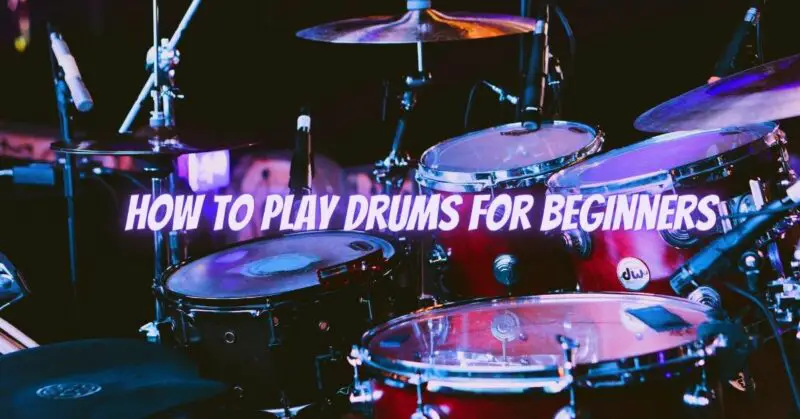Playing the drums is an exhilarating and rhythmic experience that forms the backbone of many genres of music. If you’re a beginner looking to dive into the world of drumming, it’s important to start with a solid foundation and develop proper techniques. In this article, we will guide you through the essential steps to get started on your drumming journey, from setting up your drum kit to learning basic beats and practicing essential skills.
- Set Up Your Drum Kit: Before you begin playing, set up your drum kit in a comfortable and ergonomic manner. Adjust the height of the drum throne (seat) so that your legs are at a 90-degree angle and your feet can comfortably reach the pedals. Position the snare drum between your legs at waist height, aligning it with your belly button. Place the bass drum pedal beneath your right foot, and adjust the height and angles of the toms and cymbals to suit your playing style.
- Learn Proper Grip and Stick Technique: Start by mastering the correct grip and stick technique. Hold the drumsticks with a loose grip, placing the sticks between your thumb and index finger. Wrap the other fingers around the sticks for support. Experiment with different grips, such as matched grip (both hands holding the sticks the same way) or traditional grip (left hand holds the stick differently for better snare drum control). Practice drumming rudiments (basic patterns) like single strokes, double strokes, and paradiddles to develop control and coordination.
- Focus on Basic Drumming Beats: Begin with basic drumming beats to build your rhythm and coordination skills. Start with simple patterns like the rock beat or the basic jazz swing beat. These beats typically involve playing the bass drum on beats one and three, the snare drum on beats two and four, and adding hi-hat or cymbal accents. Practice these beats slowly at first, gradually increasing the tempo as you become more comfortable.
- Work on Coordination: Drumming requires coordination between your hands and feet. Practice exercises that focus on limb independence, such as playing different rhythms with each hand or adding bass drum patterns to your beats. Start slowly and gradually increase the speed while maintaining accuracy and control. Use a metronome or drumming apps with built-in tempo guides to stay in time and develop a solid sense of rhythm.
- Explore Different Styles and Techniques: Once you’ve mastered the basics, explore different styles of drumming and techniques that interest you. Experiment with rock, jazz, funk, Latin, or any other genre that catches your attention. Listen to drummers who inspire you and try to replicate their grooves and fills. Consider taking lessons from a professional drum instructor or using online tutorials to learn new techniques and expand your repertoire.
- Practice Regularly: Consistency is key to progress in drumming. Set aside dedicated practice time each day or week to hone your skills. Start with short practice sessions and gradually increase the duration as you build stamina. Focus on specific skills, like hand speed, footwork, or playing along with music tracks. Regular practice will help you develop muscle memory, improve timing, and enhance your overall drumming abilities.
- Play Along with Music: One of the most enjoyable aspects of drumming is playing along with your favorite songs. Select tracks with varying tempos and styles and try to match the drumming patterns. Start with simpler songs and gradually progress to more complex ones. This exercise helps improve your timing, groove, and ability to play in a band context.
- Join or Form a Band: Playing drums with other musicians is a fantastic way to grow as a drummer and experience the thrill of performing. Seek opportunities to jam with other musicians or join a local band or ensemble. Playing with other instrumentalists will improve your ability to listen, adapt, and lock in with the rhythm section. It also provides valuable experience in a collaborative musical environment.
Conclusion: As a beginner drummer, taking the time to learn proper techniques, practicing regularly, and exploring different styles will lay the foundation for your drumming journey. Remember to start with a well-set-up drum kit, focus on grip and stick technique, master basic drumming beats, develop coordination skills, and explore various musical genres. With dedication, patience, and a passion for rhythm, you’ll soon find yourself grooving and creating music with confidence. So, grab your drumsticks, sit behind your drum kit, and let the beats begin!


